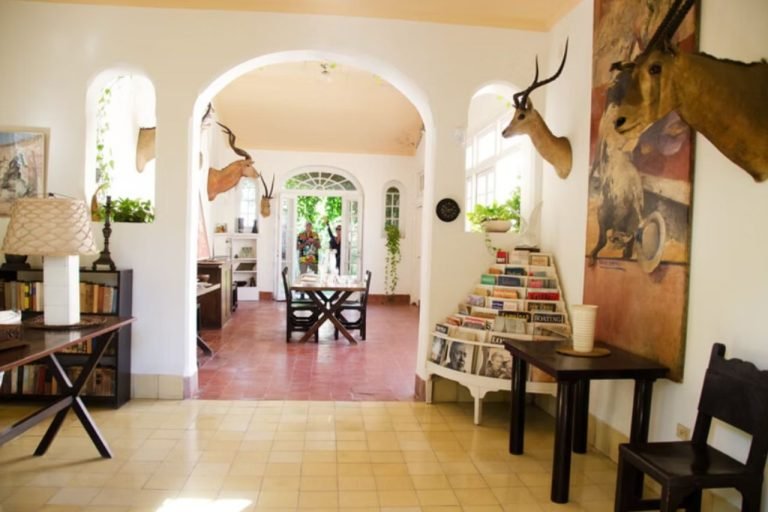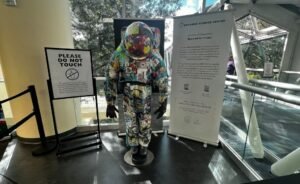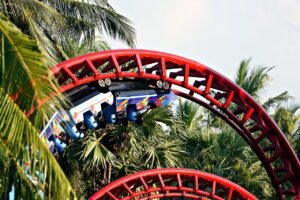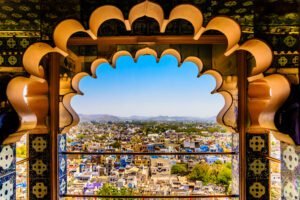This post may contain affiliate links, which means I may earn a small commission from purchased products at no additional cost to you. See my full disclosure here.
Cuba, through the eyes of Ernest Hemingway, reveals a side of the island that feels like stepping into the pages of his books. For over 20 years, Hemingway called Cuba home, writing some of his most famous works, fishing off the coast, and spending time in Havana’s lively bars.
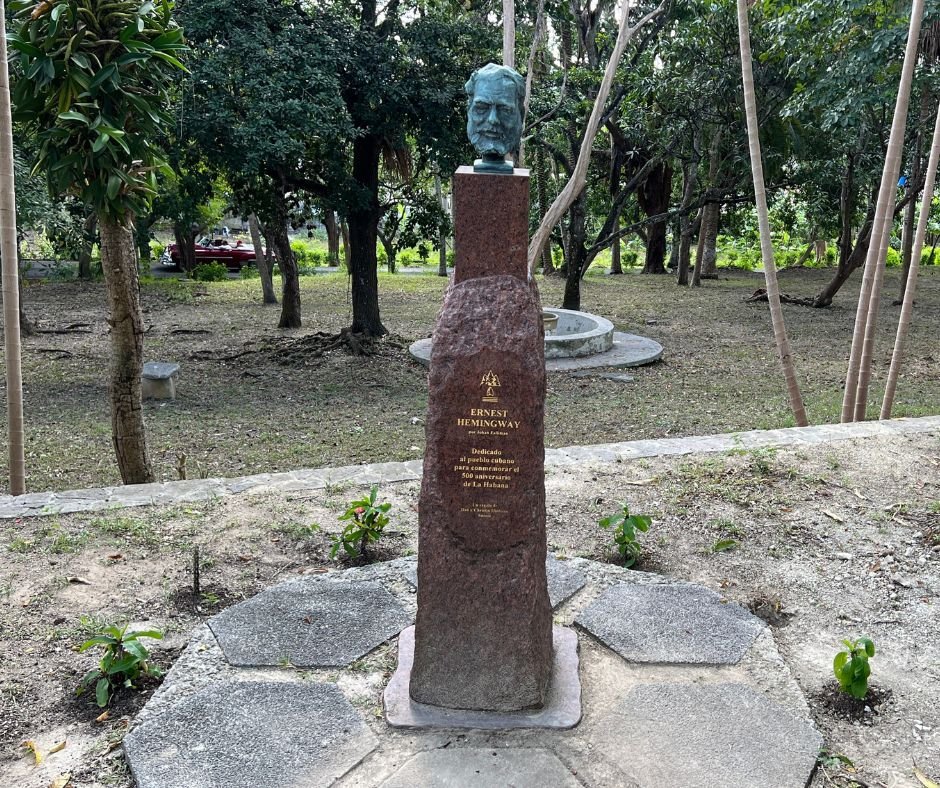
If you’re visiting Cuba, exploring Hemingway’s legacy will take you to his former home, Finca Vigía, the bars where he drank, and the fishing village that inspired The Old Man and the Sea. Along the way, you’ll soak in the atmosphere that shaped one of the greatest writers of all time.
Table of Contents
Nostalgic Drive in a Vintage Cuban Car
To explore Hemingway’s Cuba, I start with a drive in a classic 20th-century car along the coastline to Finca Vigía, about 15 miles outside Havana in San Francisco de Paula.
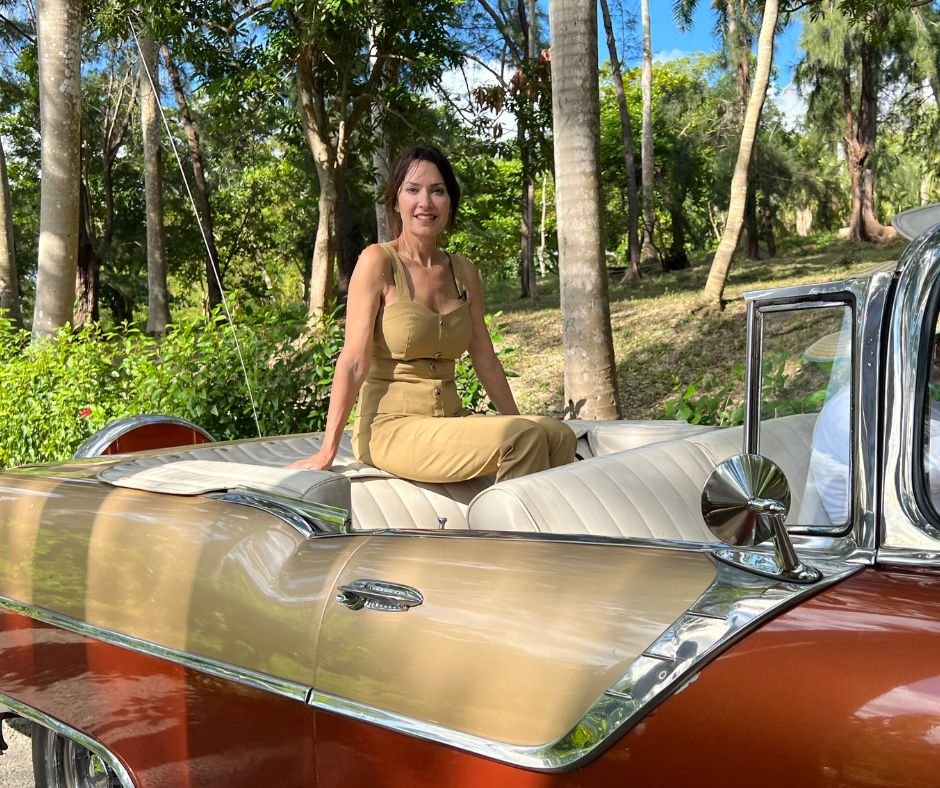
Cubans call these vintage American cars “Almendrones”, meaning almonds, because of their rounded shape. These classic cars, pieced together with parts from different countries, are a symbol of Cuba’s past and a reminder of the days before the revolution.
Despite the idea that Cuba is frozen in time, you’ll see modern cars from Europe and Asia mixed with the old classics. In the 2010s, Cuba relaxed restrictions on car imports, but most people can’t afford a new car. A modern car costs between $50,000 and $100,000, and because of the U.S. trade embargo, Cubans can’t buy American cars.
Driving through Havana’s streets and coastal highways, you’ll pass swaying palm trees, ocean views, and colorful homes before arriving at Hemingway’s Cuban retreat.
Finca Vigía: Hemingway’s House in Cuba
We arrive at Hemingway’s home, known as Finca Vigía, meaning “Lookout Farm”, hidden among palms and gardens away from the surrounding neighborhood of modest homes. Hemingway remodeled the house, which was built in 1886 by the Catalan architect Miguel Pascual y Baguer, and lived in the house from mid-1939 to 1960.
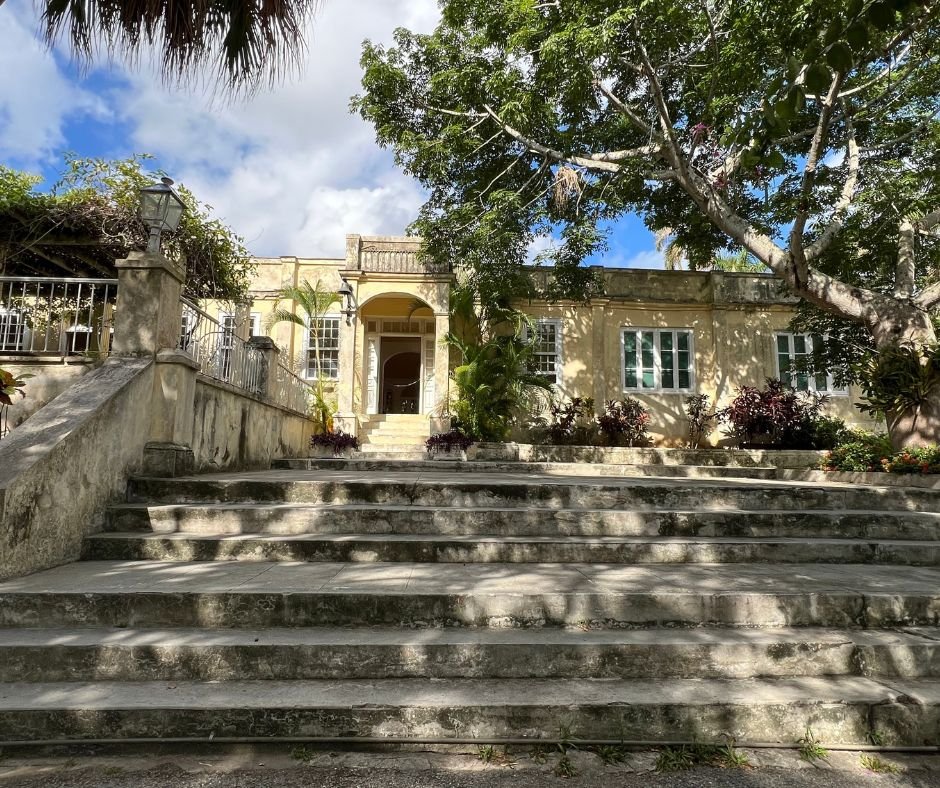
What to Expect When Visiting Finca Vigía
Finca Vigía is one of Cuba’s most popular tourist attractions, so expect crowds and be prepared to navigate your way around people to look inside the windows and doorways.
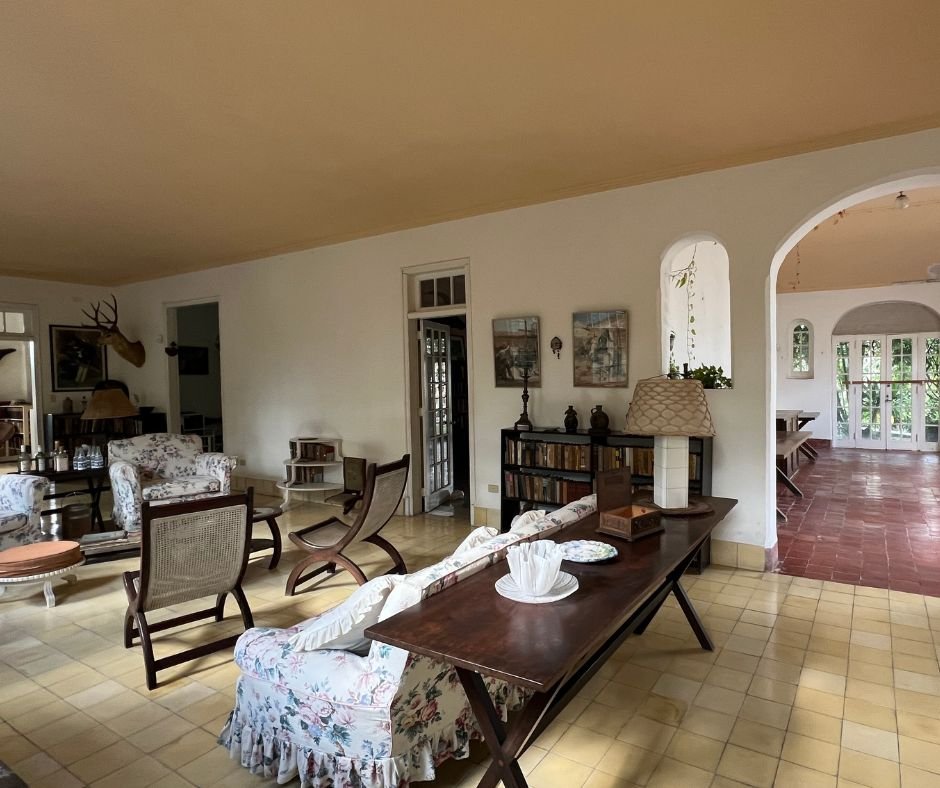
Visitors can’t walk inside the home to see the rooms with their original furnishings. Docents or museum guides are the only ones inside. They also walk around the perimeter sharing information and stories.
Inside Hemingway’s Home: A Look at His Life & Oddities
Hemingway filled his home with oddities from his travels and taxidermy from his many big game hunting trips.
Notable Features Inside Finca Vigía:
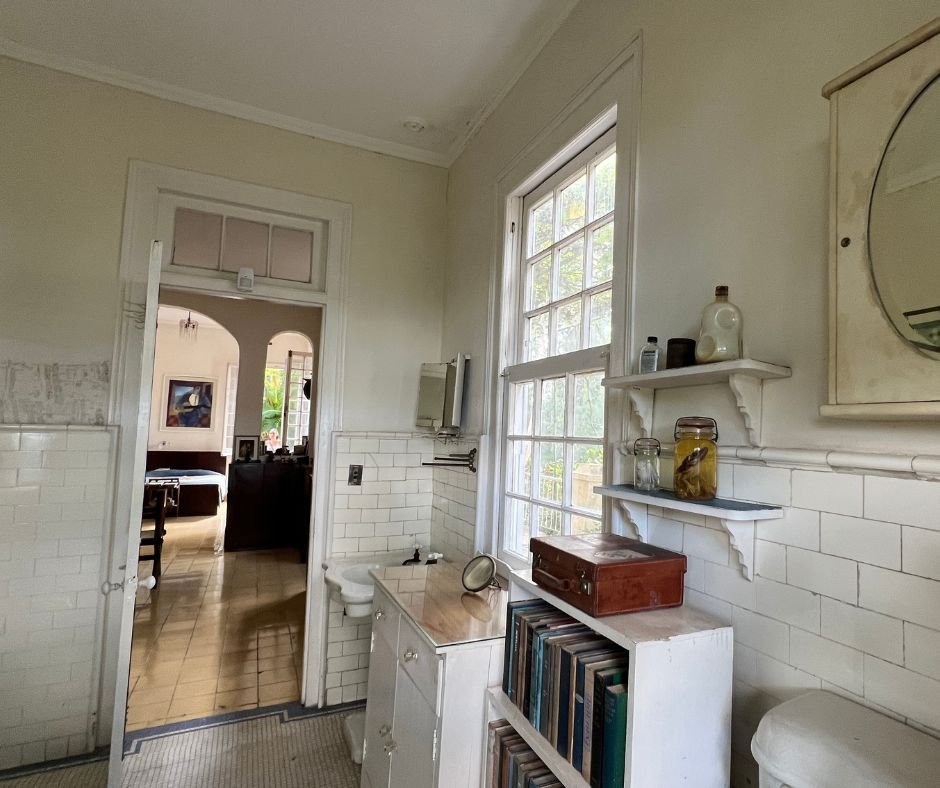
- A jar with a preserved frog – Found in the bathroom.
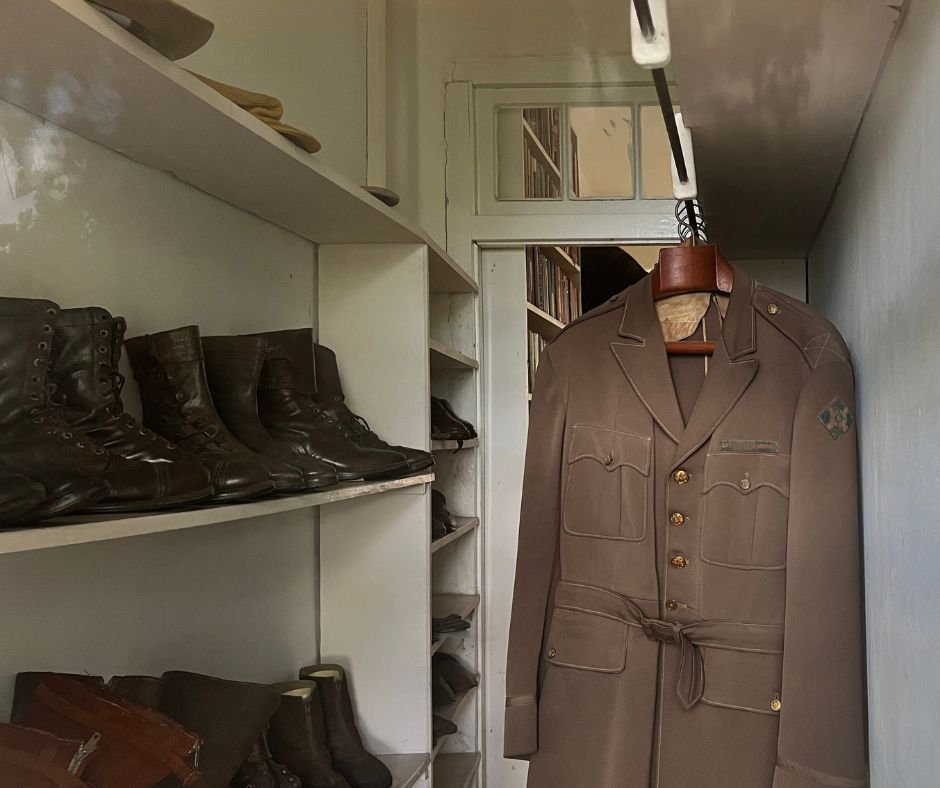
- His war uniform – Hanging in his closet.
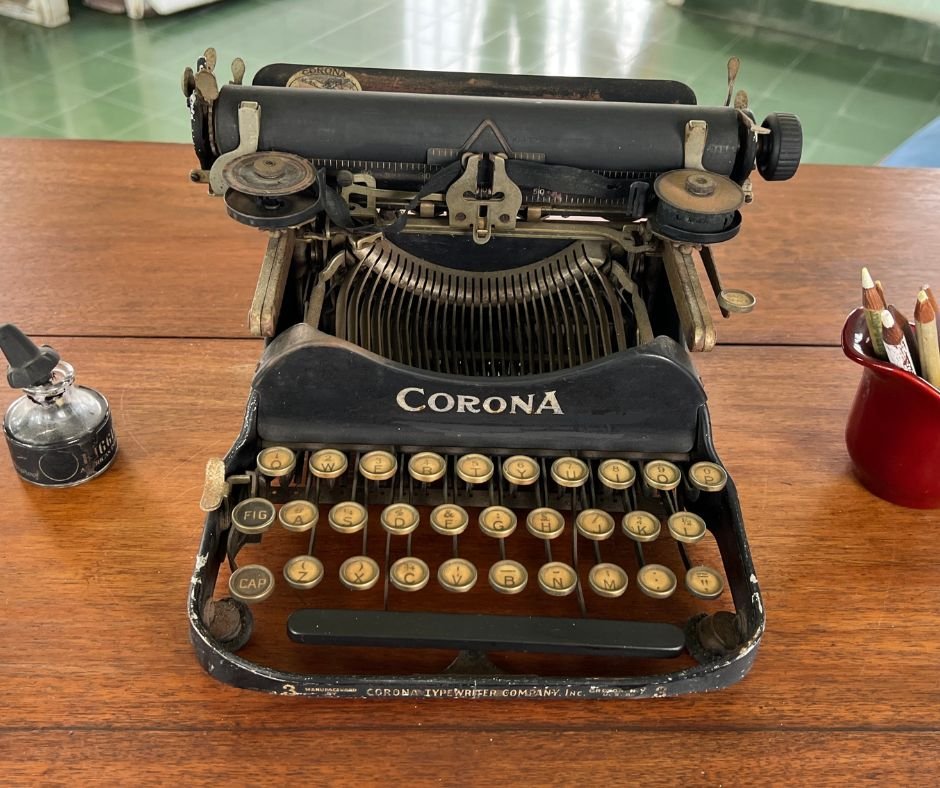
- His typewriter – Hemingway often wrote in his bedroom, sitting on the side of his bed, where his typewriter sits on a nearby shelf.
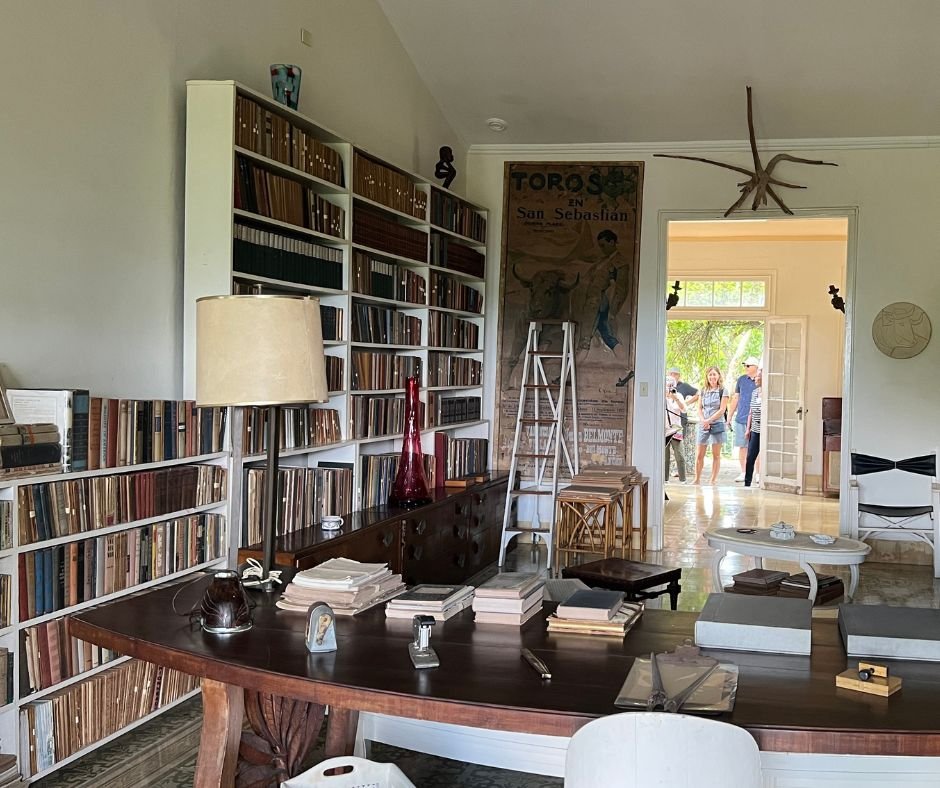
- His personal library – Over 9,000 books, many of which remain open as if he just left them. Hemingway wrote most of his bestsellers at this desk, including For Whom the Bell Tolls.
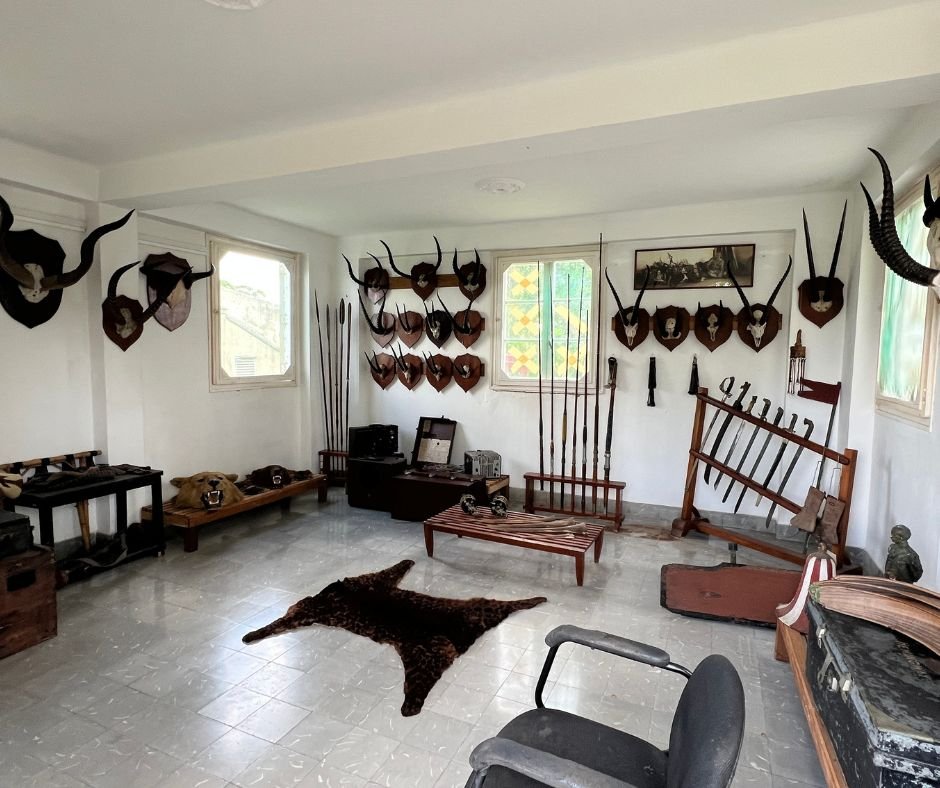
- Hemingway’s African antelope hunting trophies – Taxidermy mounts cover the walls from his big-game hunting trips.
Hemingway’s War Experience
Although Ernest Hemingway did not fight in any war, he was involved in multiple conflicts as:
- An ambulance driver during World War I – He was wounded by mortar fire on the Italian front but survived, inspiring parts of A Farewell to Arms.
- A war correspondent – He covered the Spanish Civil War for the North American Newspaper Alliance (NANA) and later wrote For Whom the Bell Tolls while living at Finca Vigía.
- A WWII observer – He patrolled for German U-boats using his fishing boat, Pilar.
Exploring the Grounds of Finca Vigía

A walk to the back of the property through paved garden pathways leads to:
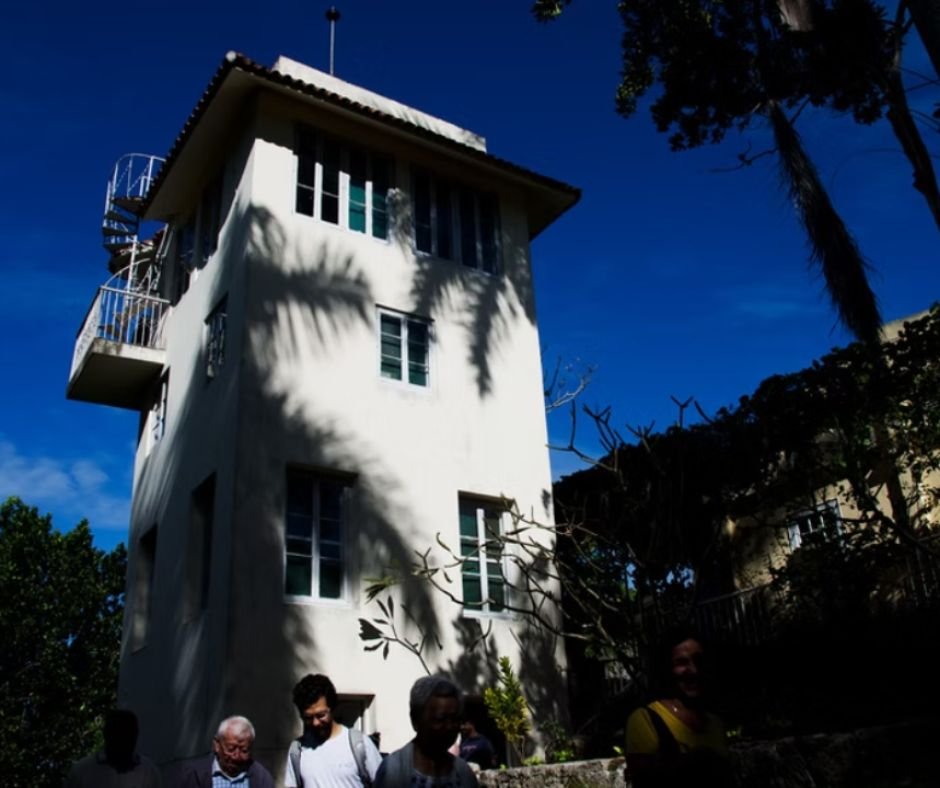
- The Three-Story Writing Tower – A quiet retreat that looks out over the treetops, where Hemingway wrote and worked undisturbed. Mary Hemingway had this tower built for Ernest so he could have a quiet space to write. However, he rarely used it, as he preferred working inside the main house. Despite this, the tower offers a stunning view of Havana.
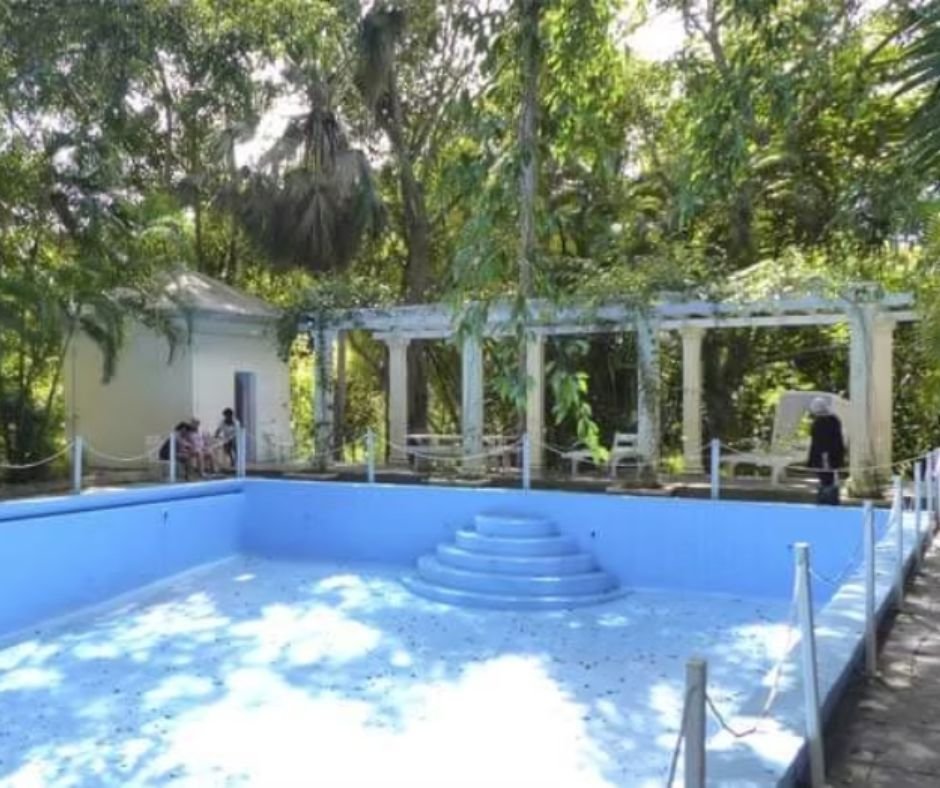
- The Swimming Pool – Once the largest private pool in Cuba. Today, the pool remains empty, but during Hemingway’s time, he swam here almost every morning. He was also known to enjoy late-night swims, often accompanied by his wives. His romance with Ava Gardner was no secret – legend has it that she once took a midnight dip in the pool, completely nude.
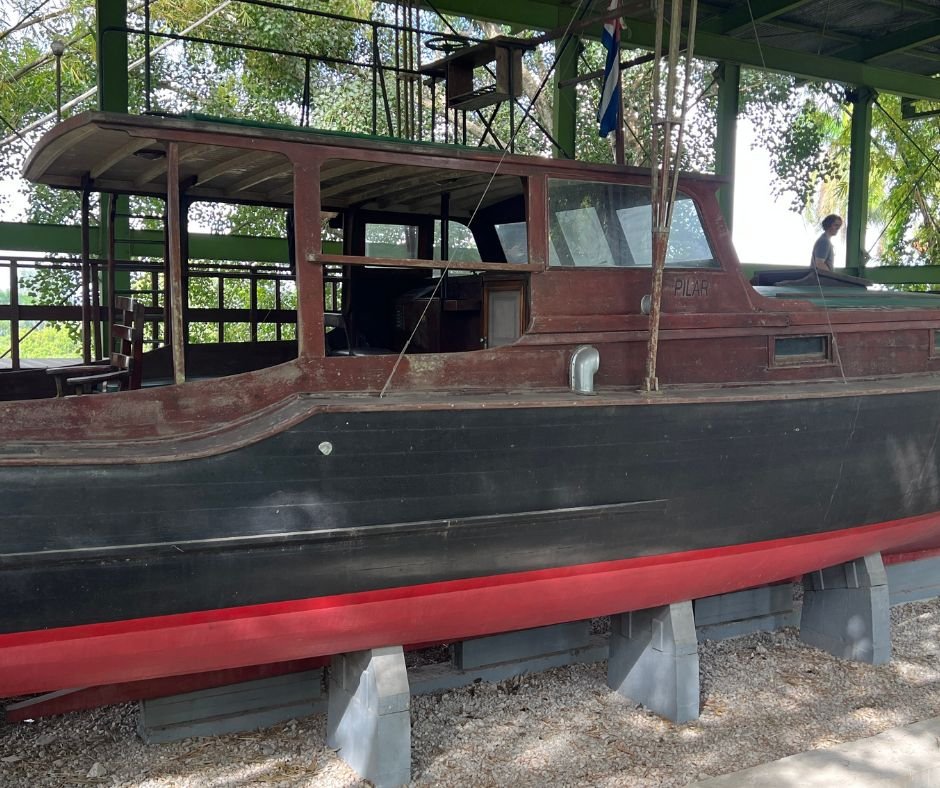
- The Dock – Hemingway’s wooden fishing boat, Pilar, rests here. Hemingway and his friend Gregorio Fuentes took El Pilar out to the open sea to fish. Their adventures inspired his famous novel, The Old Man and the Sea. Today, El Pilar sits on display at Finca Vigía.
Hemingway’s Cuba: His Favorite Hangouts
There are several other must-visit Hemingway stops in Havana that showcase his love for the city and its culture.
Hotel Ambos Mundos
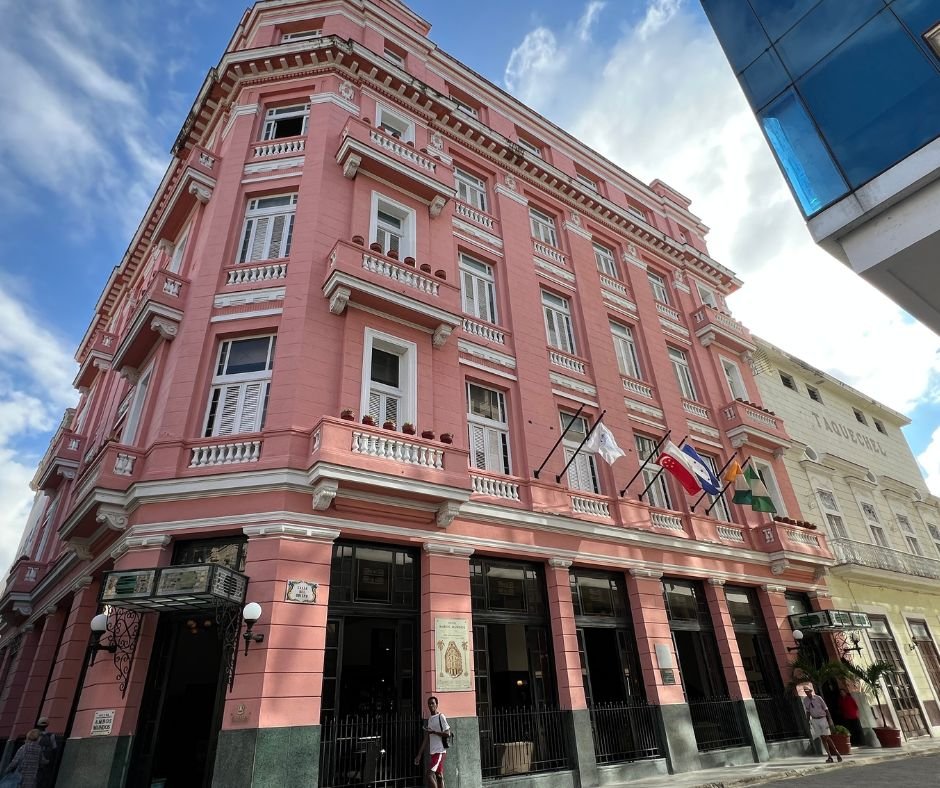
Before buying Finca Vigía, Hemingway lived at Hotel Ambos Mundos in Room 511, now a museum. For Hemingway the hotel was “a very good place to write”, as he said himself. In his hotel room he finished the book “Death in the Afternoon” (1932) and he started the novels “The Green Hills of Africa” (1935) and “Having and Not Harboring” (1937).
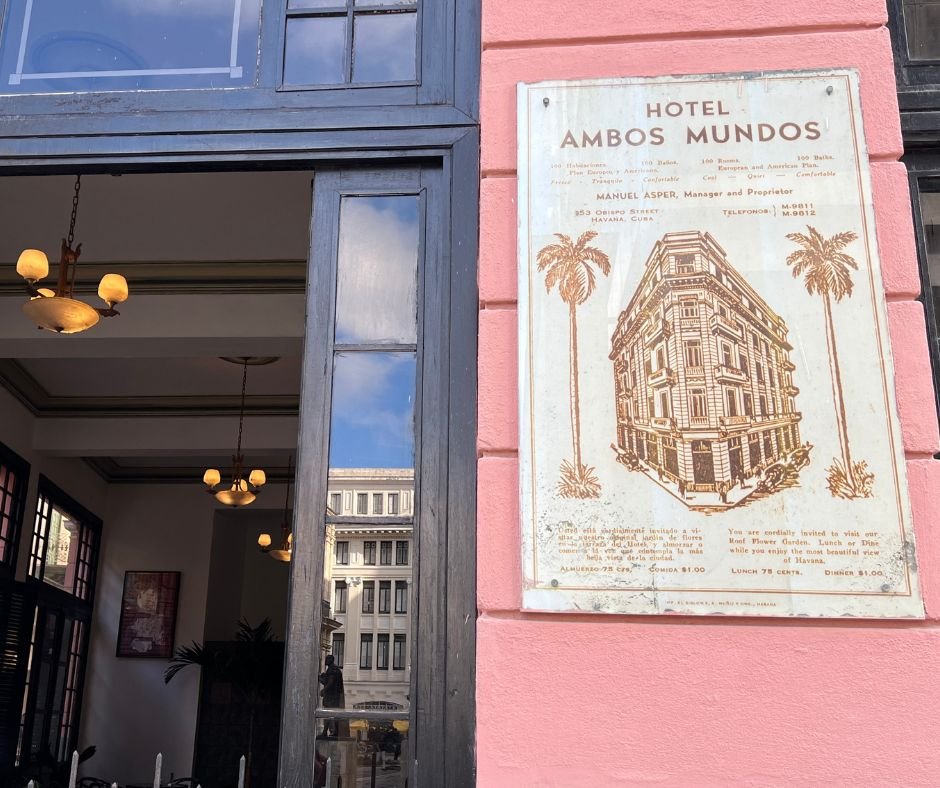
I visited the hotel’s lobby, filled with photos of Hemingway, then headed up to the rooftop bar.

I ordered a daiquiri in his honor, enjoying the panoramic views of Havana, the harbor, and Plaza de Armas.
La Bodeguita del Medio — The Mojito Bar
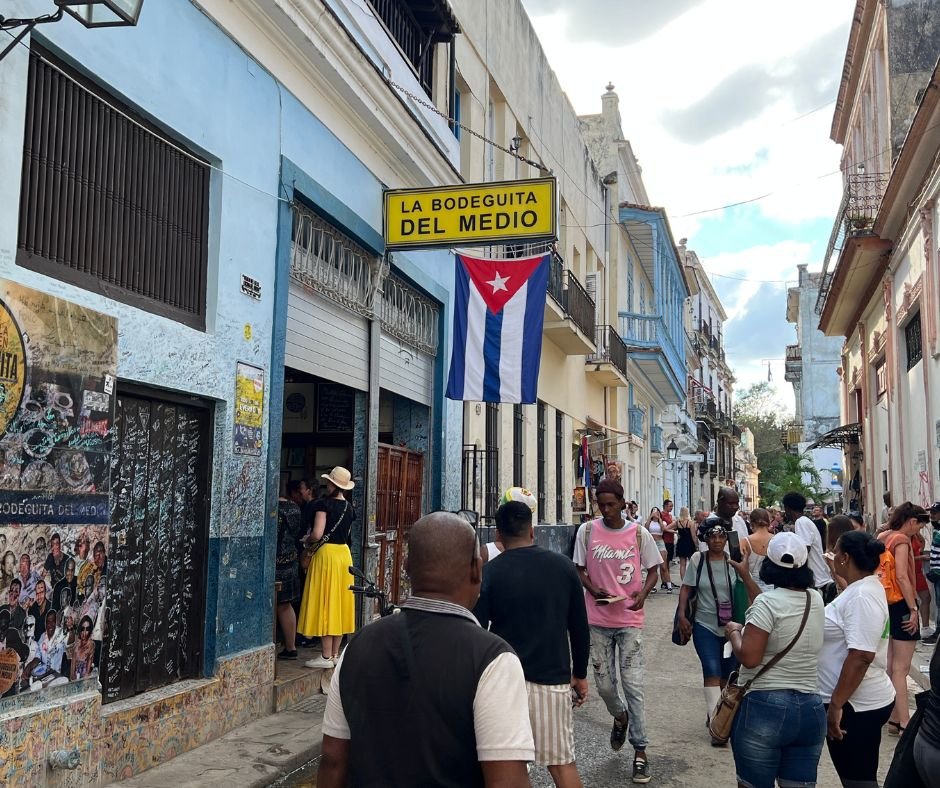
Hemingway loved mojitos and often drank them at La Bodeguita del Medio.
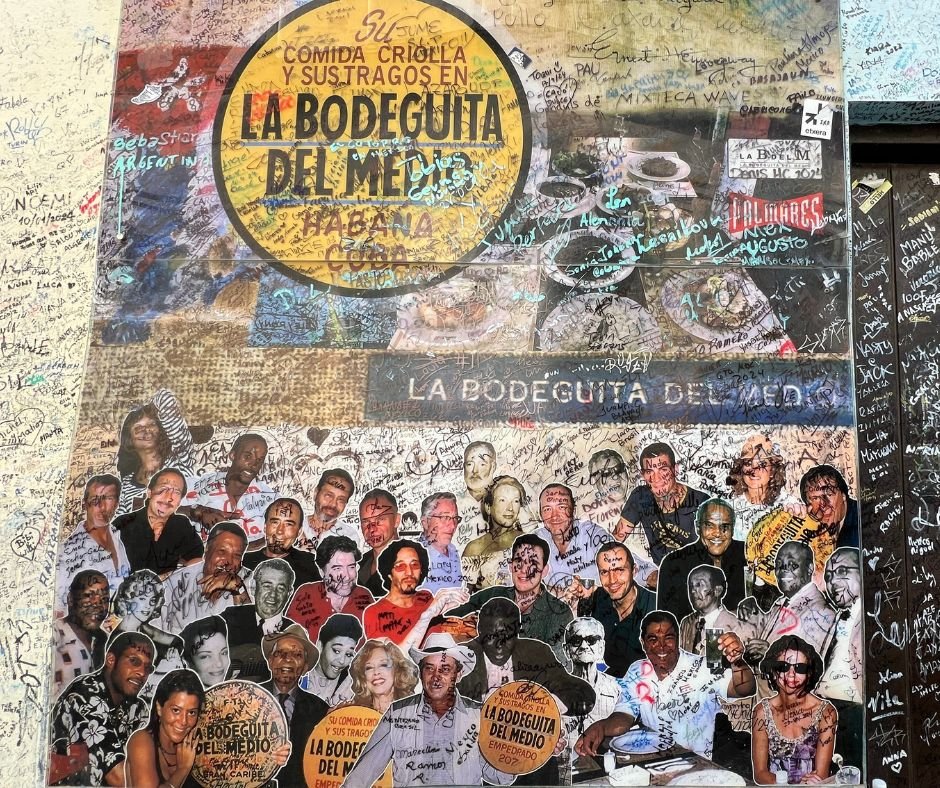
This bar is famous for creating the mojito, and the walls are covered in signatures from writers, artists, and celebrities.
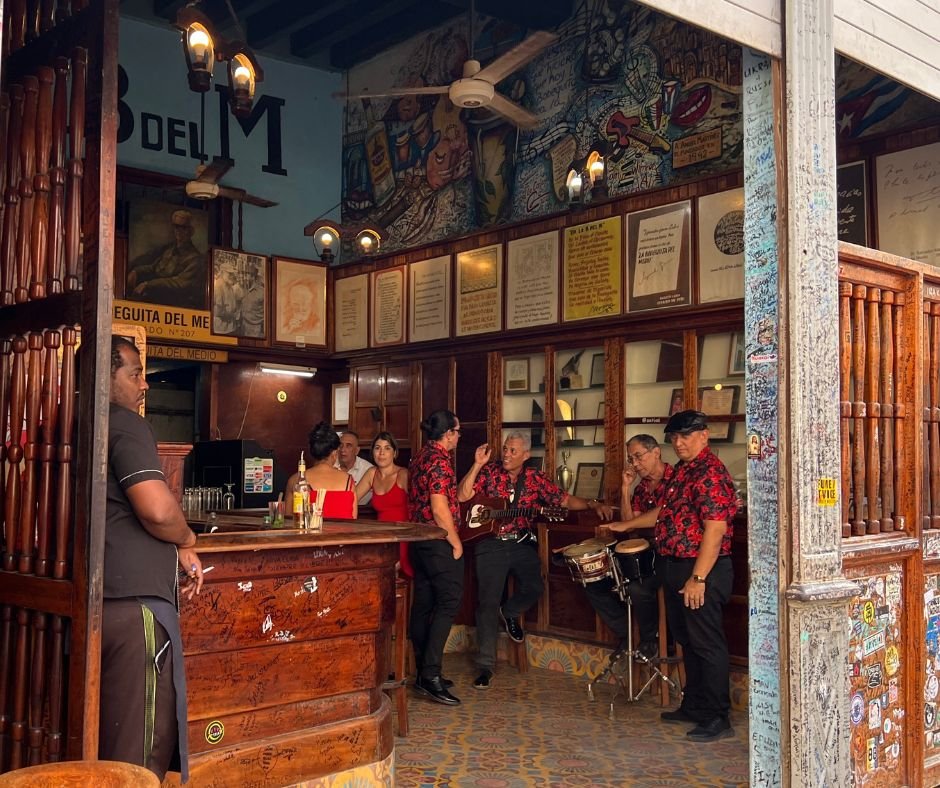
Inside, live Cuban music plays all day, making it a great place to soak up the Havana atmosphere.
Marina Hemingway – Hemingway’s Home Port
In 1934, after returning from an African safari, Hemingway spotted the yacht Pilar in Havana’s harbor and immediately fell in love with it. He bought it for $7,500 and set out regularly with his friend Gregorio Fuentes to go deep-sea fishing. His favorite catches—blue marlin and swordfish—inspired his novel The Old Man and the Sea.
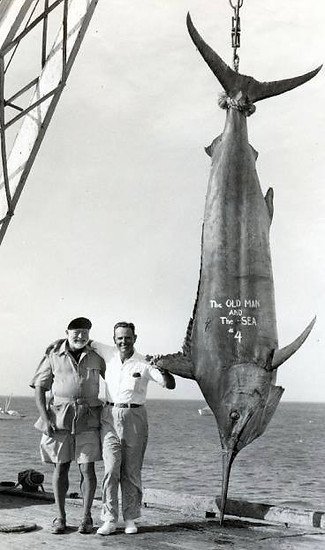
The Marina Hemingway became Pilar’s home port and remains a significant part of Hemingway’s connection to the sea. Today, it features a hotel, bars, and restaurants, offering a quieter, more relaxing escape than other tourist-heavy areas.
At Marina Hemingway, you can enjoy fresh seafood, swim in crystal-clear water, and spot exotic fish right in the harbor.

Every June, the marina hosts the Hemingway International Billfish Tournament, one of the oldest fishing competitions in the world, which Hemingway founded in 1950.
If you prefer to explore Marina Hemingway independently, you can book a tour through Expedia for another great way to experience this historic site.
Hemingway’s Legacy in Cuba
After Hemingway died by suicide in 1961, his fourth wife, Mary Welsh Hemingway, donated Finca Vigía to the Cuban government, ensuring it would be preserved as a museum.
Preserving Hemingway’s Legacy
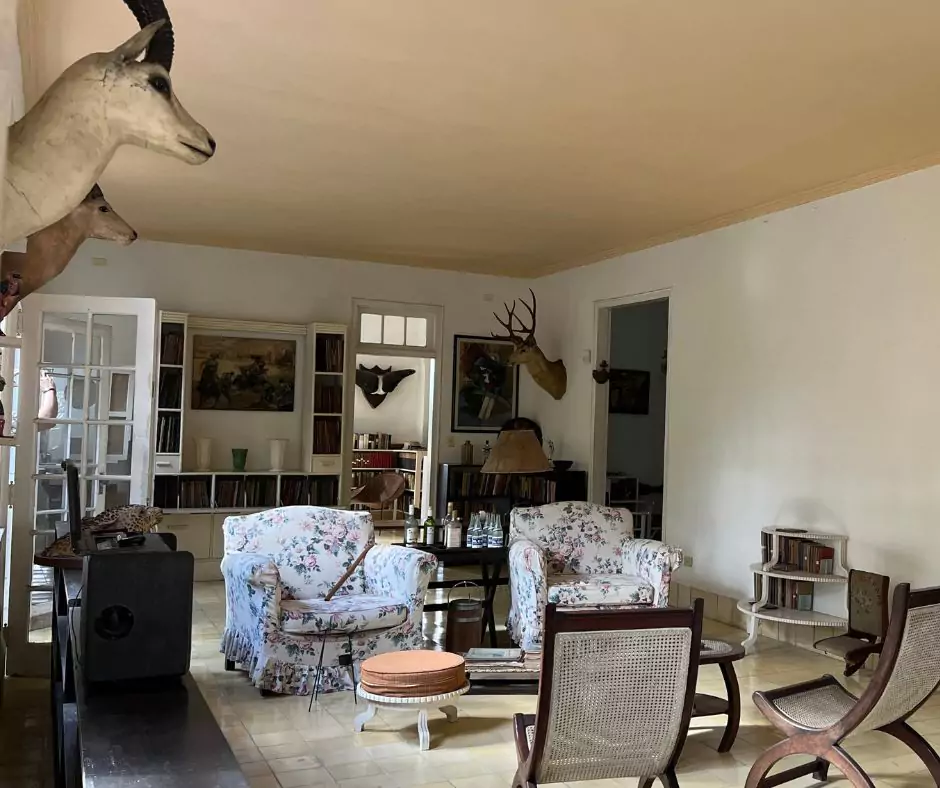
Over the years, efforts have been made to restore and protect Hemingway’s house and belongings. The Finca Vigía Foundation, created in 2002, works to preserve Hemingway’s books, letters, and personal artifacts.
Hemingway’s Impact on Cuban Culture
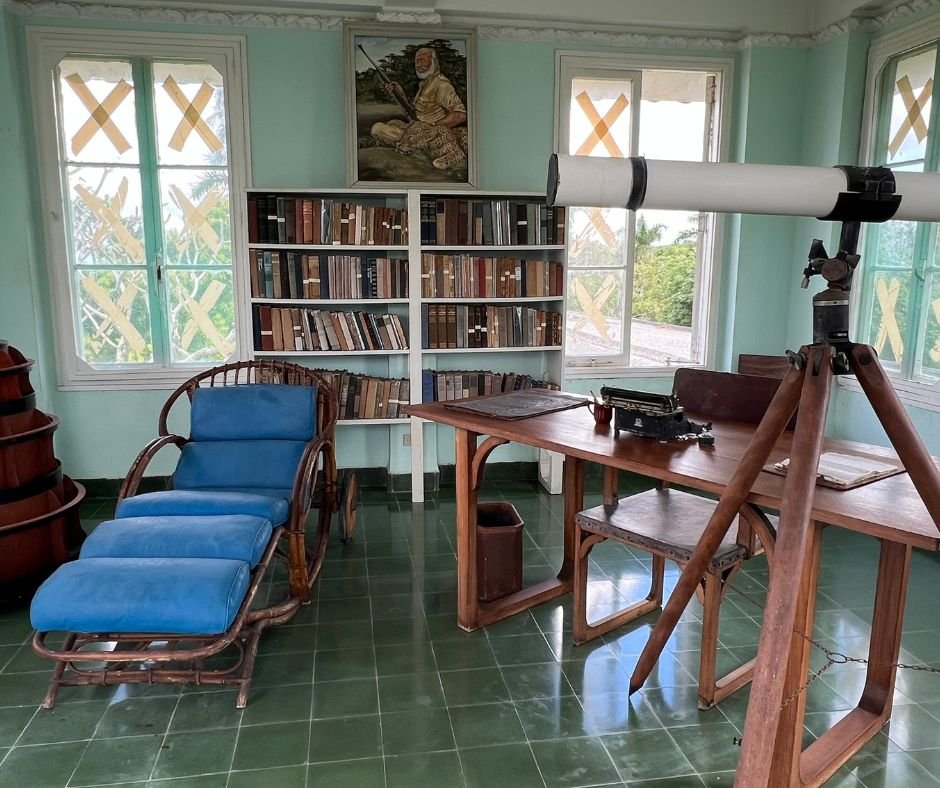
Hemingway wasn’t just a foreigner living in Cuba – he became part of Cuban life, forming friendships with local fishermen, bartenders, and writers. His books helped bring worldwide attention to Cuba’s landscapes, people, and traditions.
Planning Your Hemingway Trip to Cuba
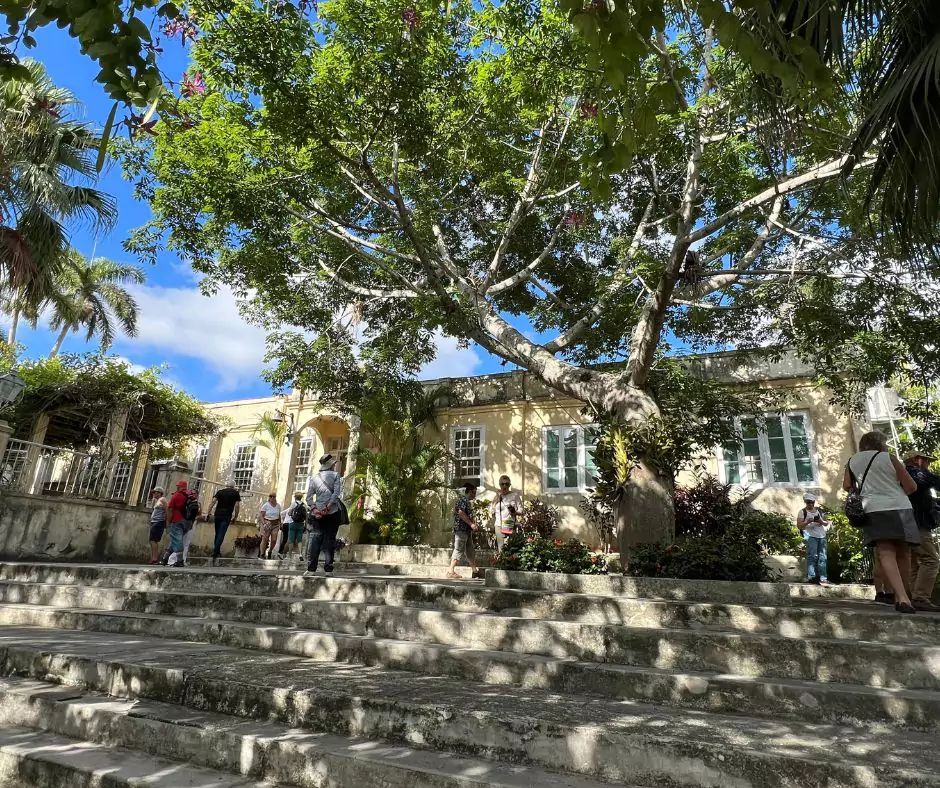
Visiting Finca Vigía
- Location: San Francisco de Paula, about 25 minutes from Havana.
- Hours: 10 AM – 4 PM (Monday-Saturday), 9 AM – 1 PM (Sunday).
- Entry Fee: Supports the museum and preservation efforts.
- Best Time to Visit: Arrive early to avoid crowds.
Book a Private Guided Tour with AC Journeys
If you want a deeper, expertly guided experience, I highly recommend booking a private tour with AC Journeys. They provided a seamless and immersive journey, sharing insights that made each stop more meaningful.
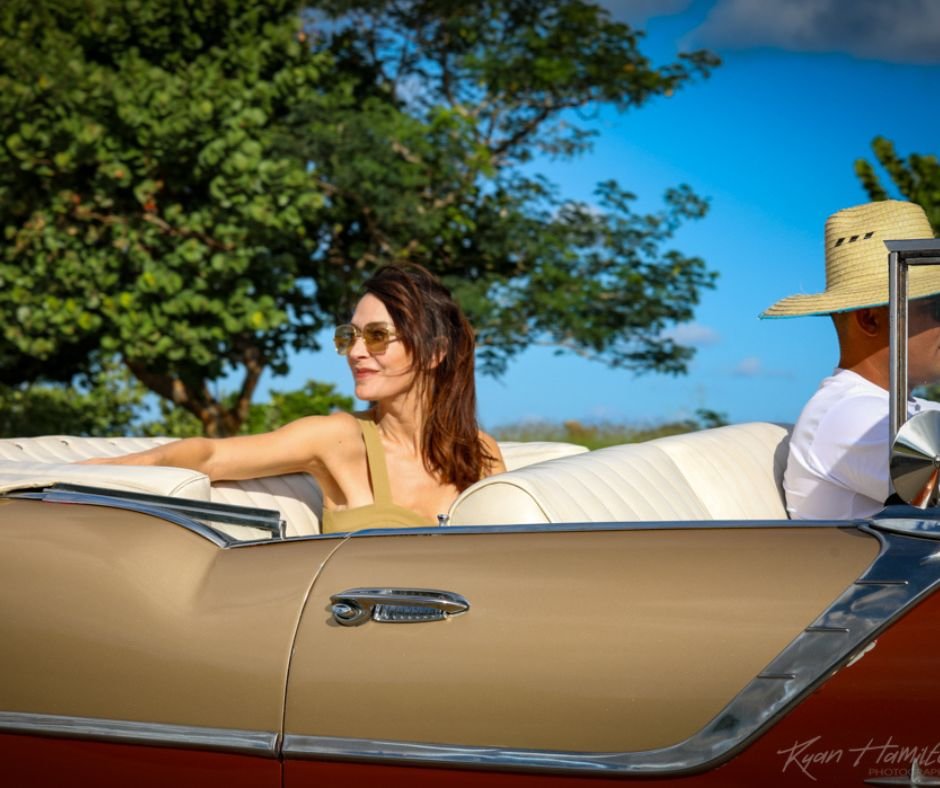
If you love literature, history, or want a unique cultural experience in Cuba, AC Journeys will take you through Hemingway’s world in the most authentic way.
If you’re looking for another way to visit Finca Vigía, you can book an Ernest Hemingway Home and Museum Tour through Expedia for a hassle-free experience.
Final Thoughts
Hemingway’s Cuba is a destination unlike any other, offering a rare glimpse into the life of one of literature’s most iconic figures. His deep connection to the island influenced his greatest works and left an enduring cultural legacy. Whether visiting Finca Vigía, Cojímar, or the lively bars of Havana, travelers can experience Hemingway’s Cuba much as he did, through its people, its landscapes, and its timeless stories.
For more information on Hemingway’s life in Havana and the places he frequented, visit Hemingway Havana, an essential resource for Hemingway enthusiasts and travelers alike.
Frequently Ask Questions (FAQ’s) About Hemingway’s Cuba
Did Hemingway live in Cuba?
Yes, Hemingway lived in Cuba for 21 years, from 1939 to 1960.
Why did Hemingway move to Cuba?
He was drawn to Cuba’s peaceful environment, strong fishing culture, and vibrant social life, which provided both inspiration and relaxation.
Why did Hemingway leave Cuba?
In 1960, following the Cuban Revolution, increasing political tensions between the United States and Cuba forced Hemingway to leave. Though he never returned, he remained deeply connected to the island until his death in 1961.
Where was Hemingway’s house in Cuba?
His home, Finca Vigía, is located in San Francisco de Paula, just outside Havana. Today, it is a museum open to visitors.
Where did Hemingway drink in Cuba?
He frequently visited El Floridita for daiquiris and La Bodeguita del Medio for mojitos.
What inspired The Old Man and the Sea?
The novel was inspired by Hemingway’s time in Cojímar and his friendship with Gregorio Fuentes, a Cuban fisherman.
Hemingway’s legacy remains strong in Cuba, offering visitors a chance to experience the places and people that shaped his remarkable life and work.
Watch the Full Episode Exploring Cuba:
Explore More Travel Guide and Tips
Travel Guide to Valencia: Top Attractions and Advice
Ecuador Roses: A Traveler’s Guide to Unique Experiences









